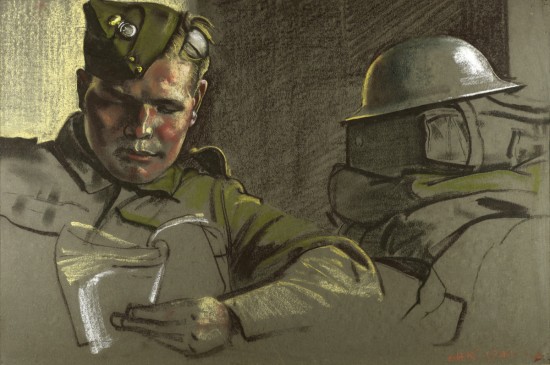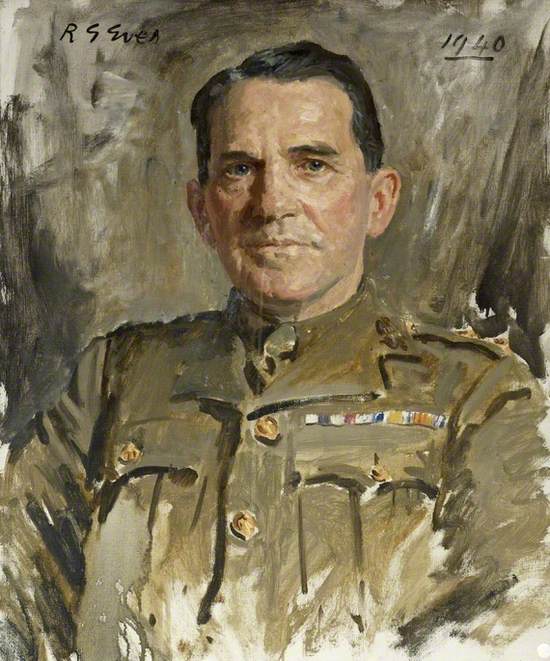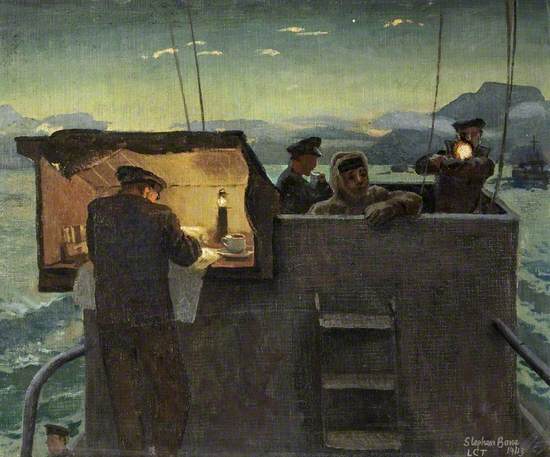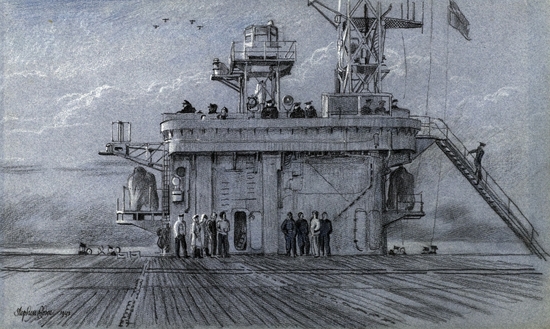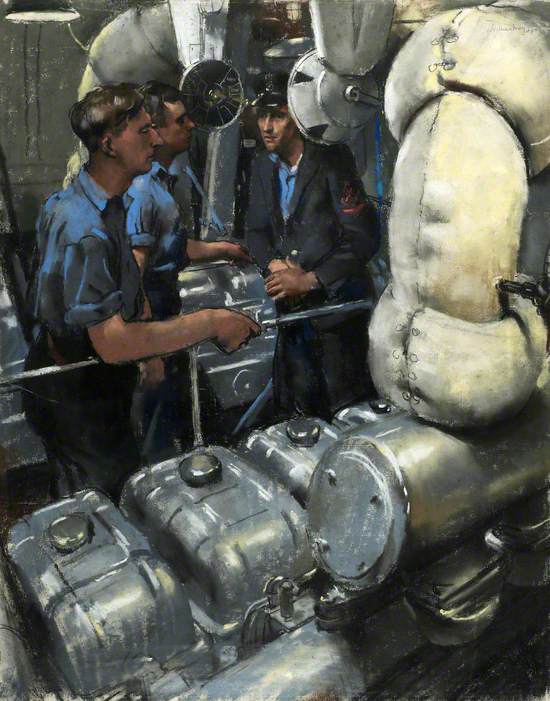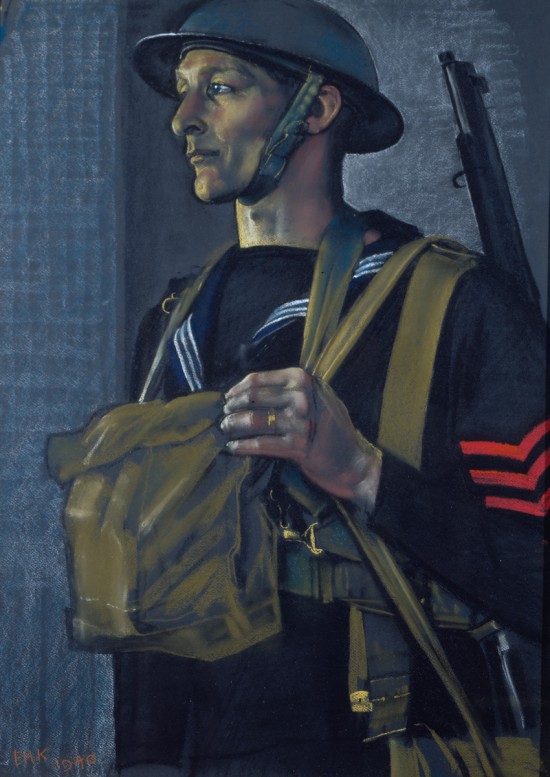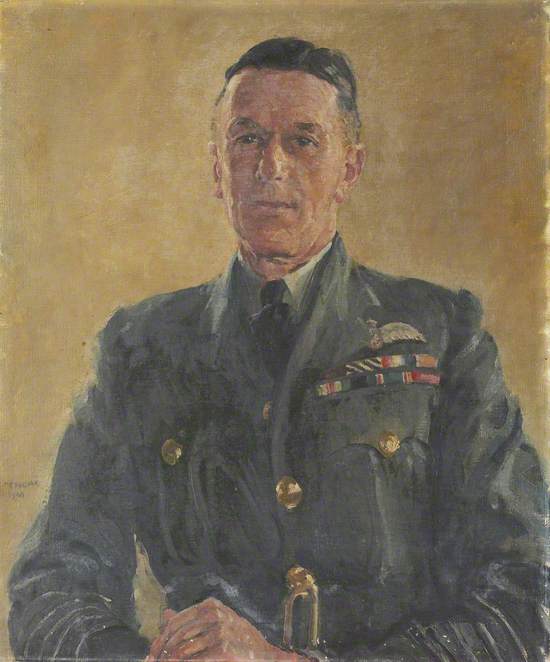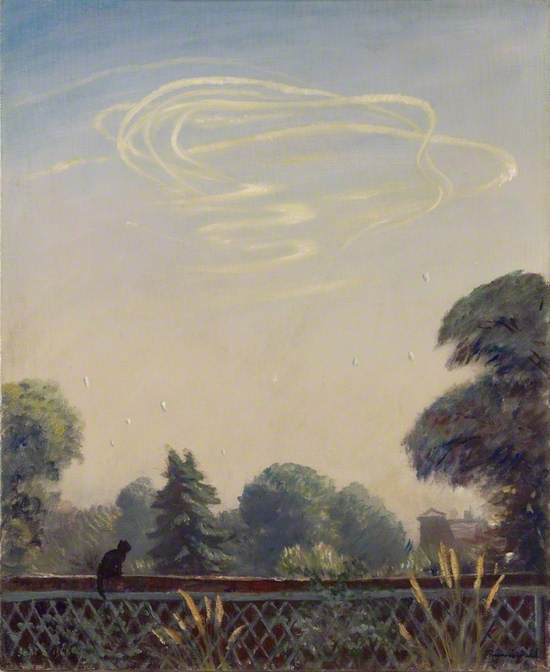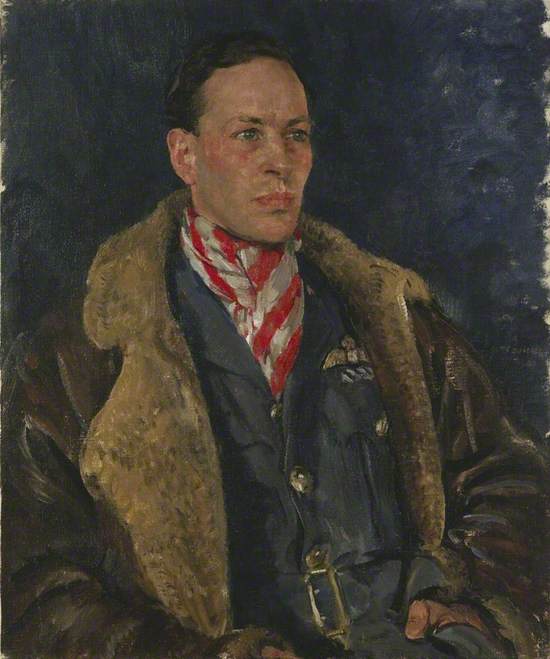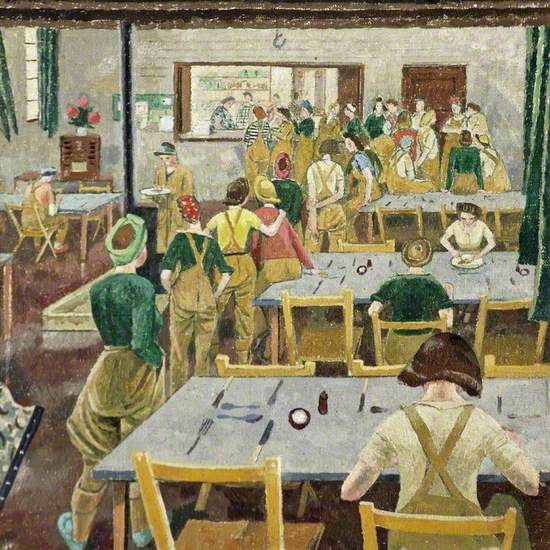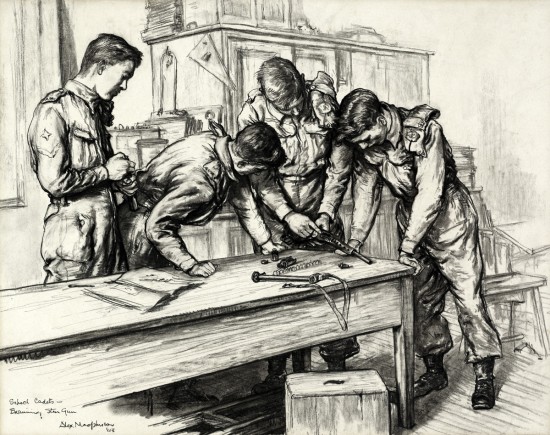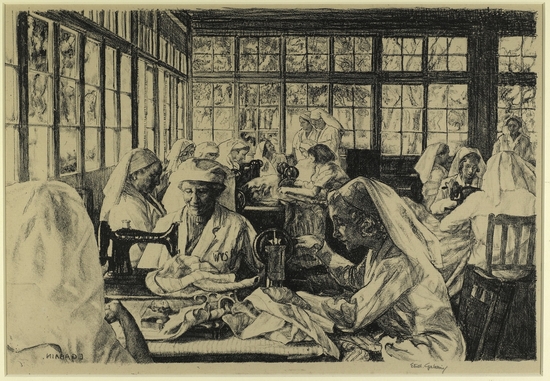2020 sees the 75th anniversary of the ending of the Second World War in Europe and 80 years since one of its key moments: the Battle of Britain.
In a conflict rooted in ideology art was a weapon. The War Artist Advisory Committee was set up by the Government to record the war, employ artists and create propaganda. Professional artists, the public and forces personnel all submitted work and exhibitions were mounted. In 1948 the Russell-Cotes received some 33 works from the Committee, some of which are presented here.
To mark the anniversary of the battle the Imperial War Museum will be working with us and other partners to proactively loan from its rich art collection for the first time thanks to the generous support of the Art Fund.
Fusilier Perrin
Wartime service personnel would have been a familiar sight waiting at railway stations as they travelled for leave, training courses and deployments. Book sales soared during the war as people sought to fight boredom and to pass the time.
Kennington was a painter, print maker and sculptor. A veteran of the First World War he was wounded and discharged but later returned to the trenches as a war artist. Between the wars he famously produced illustrations for T.E. Lawrence’s ‘The Seven Pillars of Wisdom’. Interested in the average soldier’s life, he resigned in 1942 as he thought that the Committee were not making enough propaganda use of his art.
Eric Henri Kennington (1888–1960)
Pastel on paper
H 51 x W 75.5 cm
Russell-Cotes Art Gallery & Museum
Lieutenant Colonel J. V. McCormack, MC
In 1940 John McCormack was a staff officer in France. When the Germans broke through the Allied defences he stole a car and escaped to Dunkirk, saving a group of fellow British soldiers. He was mentioned in dispatches and consequently this portrait was made.
Eves trained at the Slade and was one of the most expensive portrait painters available between the wars. He was sent to France in 1940 to paint portraits of senior officers while based at a hotel in Arras but the generals had trouble finding time to pose so Eves was directed to other sitters. The Committee thought his portraits too much alike and his commission was not renewed but he did individual one-off works, such as this painting, until he died in 1941.
Reginald Grenville Eves (1876–1941)
Oil on canvas
H 61 x W 51 cm
Russell-Cotes Art Gallery & Museum
The Despatch Rider
This depicts Lance Corporal Fred Kennett of 225 Field Company, Royal Engineers, Central Mediterranean Force who was mentioned in dispatches.
Lamb was a founder of both the Camden Town and London Groups of artists and had served in the First World War as an Army Doctor and as a war artist. He settled in Poole after 1918 and became involved with the Bournemouth Arts Club. After Eves’ death Lamb took over his Committee commission but admitted to feeling less involved in the Second World War and his portraits, although competent, reflect this detachment.
Henry Lamb (1883–1960)
Oil on canvas
H 59.6 x W 48.7 cm
Russell-Cotes Art Gallery & Museum
Major General Worthington (1889–1967)
Canadian Major-General Frederic Franklin Worthington had been a mercenary before the First World War. After being awarded the Military Medal in he set up and commanded the Canadian Armoured Corps. Nicknamed ‘Worthy’ or ‘Fighting Frank,’ he missed out on having a fighting command in Europe during the Second World War due to political manoeuvring amongst his superiors.
Sent back to Canada he was put in charge of Camp Borden, the main Canadian Army training facility. Things there were out of control with black marketeering of fuel and supplies rife. Worthington immediately placed armed guards on the gates, dug trenches to trap interlopers and placed land mines on the woodland trails around the camp. Discipline was swiftly restored.
Henry Lamb (1883–1960)
Pastel on paper
H 56 x W 45 cm
Russell-Cotes Art Gallery & Museum
Tank Landing Craft: On the Bridge at Dawn
Vessels such as this – as the name suggests – ferry tanks into battle onto an enemy’s shore. Thousands of landing craft in dozens of different types were built during the war with the basic design being constantly improved.
This scene probably shows one of the Lochs of Northern Ireland which were used by the Royal Navy for training. A signalman is using a lamp to flash a message while and officer works at the chart table. The box structure obviously keeps the weather off the chart table but the curtain is there to control light as well. Light discipline at sea at night was vital as even a small electric torch could be seen many miles away by enemy submarines.
Stephen Bone (1904–1958)
Oil on canvas
H 51.3 x W 61.6 cm
Russell-Cotes Art Gallery & Museum
The Island, HMS 'Pursuer'
The Island on an aircraft carrier is a combination of the ship’s bridge and aircraft control tower and was a British innovation. HMS Pursuer provided air cover and anti-submarine protection to the Allies’ transatlantic convoys. She was also involved in the Normandy landings and the invasion of southern France. Bone seems to have been very inspired by the ship while aboard as he painted four oils of her as well.
Bone was appointed to the Committee in 1943. Working with the Admiralty he filled the spot vacated by his father following the death of his other son, Gavin a poet, from tuberculosis. Stephen was made a Royal Naval Reserve officer and recorded naval bases and ships across the UK as well as visiting Caen in Normandy after D-Day.
Stephen Bone (1904–1958)
Pastel on paper
H 27 x W 65 cm
Russell-Cotes Art Gallery & Museum
Chief Engineman P. Smith, RNPS; Stoker I/C A Brazier, RNPS; Stoker I/C A Farrow, in the Engine Room of BYMS 2254
British Yard Mine Sweepers (BYMS) were designed and built in the USA for lend-lease to the Royal Navy. The Royal Naval Patrol Service (RNPS) employed trawlermen to carry out anti-submarine and dangerous mine sweeping duties.
Dring was a graduate of the Slade and taught drawing and painting at the Southampton School of Art until 1942. A specialist in portraiture, he was sent by the Committee to work with the Admiralty. He was a fast worker, taking less than an hour, and he travelled widely capturing casual portraits like this.
William D. Dring (1904–1990)
Chalk & pastel on paper
H 61.5 x W 48.3 cm
Russell-Cotes Art Gallery & Museum
Able-Seaman Povey of HMS 'Hardy'
Kennington wrote of Able Seaman Povey: 'The complete sailor. All life’s problems solved, a most knowledgeable philosopher. At home in any country. A mass of wars and earthquakes in his past. Perennial youth. A notable boxer at 40 years.' Povey fought at the Battle of the River Plate in 1939.
The destroyer HMS Hardy was built in 1936. After being heavily engaged at the Battle of Narvik during the invasion of Norway she was beached on 10.4.1940 where her wreck remains. 32 of her crew died including her commanding officer, Captain Bernard A.W. Warburton-Lee, who was awarded a posthumous Victoria Cross.
Eric Henri Kennington (1888–1960)
Pastel on paper
H 74.5 x W 53.5 cm
Russell-Cotes Art Gallery & Museum
Group Captain C. A. Bouchier (1895–1979), OBE, DFC
Group Captain Boucher played a key role in the Battle of Britain as commanding officer of RAF Hornchurch, part of Fighter Command's 11 Group. The notable fighter aces R.R. Stanford-Tuck, A.G. 'Sailor' Malan and A.C. Deere were under his command. RAF Hornchurch was bombed twenty times during the Battle of Britain. For his work as a Sector Controller, Bouchier was mentioned in dispatches.
A designer as well as an artist, Dugdale was noted for his book covers and textile designs. He studied at the Manchester School of Art, the Royal College of Art, the City and Guilds London School of Art, the Academie Julian and the Académie Colarossi in Paris! During the War he organised his local Home Guard unit as well as working as a war artist.
Thomas Cantrell Dugdale (1880–1952)
Oil on canvas
H 74 x W 61.5 cm
Russell-Cotes Art Gallery & Museum
An Aerial Battle
This painting shows a clash between RAF Fighter Command and the German Luftwaffe as seen from a back garden. The white contrails in the sky are formed by the hot exhaust gasses from aircraft engines mixing with the cold air in the atmosphere. Spectacular formations of them were often produced attracting the notice of spectators during the Battle of Britain.
Francis Dodd was trained at the Glasgow School of Art and was the brother-in-law of the artist and Muirhead Bone. A Trustee of the Tate Gallery in 1929, he took on various short-term contracts for the Committee and sold them individual pieces he had speculatively produced. He committed suicide in 1949.
Francis Dodd (1874–1949)
Oil on canvas
H 55.8 x W 45.7 cm
IWM (Imperial War Museums)
Squadron Leader George L. Denholm (1909–1997), DFC
George Lovell Denholm was a leading fighter pilot of the Battle of Britain. Flying the newly issued Spitfire Mk.1 on 16.10.1939 he and a fellow pilot were the first to shoot down a German bomber over British territory. In 1940 his unit, No. 603 Squadron (City of Edinburgh), was deployed to RAF Hornchurch under the command of Group Captain Bouchier. Denholm was shot down twice during the Battle of Britain and claimed four enemy aircraft destroyed.
As a body of work Dugdale’s RAF portraits are a valuable record of the people from all walks of life from across the globe in who fought the Battle of Britain, not just in a cockpit but on the ground too.
Thomas Cantrell Dugdale (1880–1952)
Oil on canvas
H 76.2 x W 63.5 cm
IWM (Imperial War Museums)
ATS Soldiers on the Beach, Bournemouth
Like many seaside towns during the war Bournemouth’s hotels were requisitioned by the military for troop accommodation. Bournemouth Pier’s span was broken to prevent its use by the Germans and a defence post was set up on the end. You can see the telephone lines running across to it. The beach was laid with landmines, covered in barbed wire and given anti-tank blocks.
A painter, printmaker and book illustrator Ardizzone went to the Westminster School of Art and is famous for his humorous depictions of British daily life. He worked for the Committee for the duration of the war recording the British Army and the London Blitz. The slightly comic nature of his work often attracted criticism as it was deemed frivolous.
Edward Ardizzone (1900–1979)
Watercolour on paper
H 22 x W 30.5 cm
Russell-Cotes Art Gallery & Museum
Women's Land Army Hostel
The Women’s Land Army (WLA) provided farm labourers to replace those men called up to fight. Contrary to popular myth many WLA personnel did not live on the farms they worked on but in hostels like this. Evelyn Dunbar had an eye for detail and, apparently, the trousers issued to the WLA were that badly fitting!
Dunbar was one of the few women with a permanent position in the war art scheme. The Committee saved her from being conscripted by giving her a contract after she impressed them with some paintings she submitted of the WLA and nurses at work. She specialised in recording women’s experience of the war, working with female branches of the services such as the Auxiliary Territorial Service and the Women’s Auxiliary Air Force.
Evelyn Mary Dunbar (1906–1960)
Oil on canvas
H 22 x W 22 cm
Russell-Cotes Art Gallery & Museum
School Cadets – Examining Sten Gun
The School Cadet force supported the Home Guard and regular troops during the war and was a recruiting ground for future officers. The Sten gun was made in vast numbers to replace the losses of Dunkirk and the high cost of the American made Thompson submachine gun. A Sten cost the modern equivalent of £106 as compared to the Thompson’s £1021.32.
MacPherson trained at the Glasgow School of Art and was taught by Maurice Greiffenhagen, Anning Bell and Forrester Wilson. MacPherson was a school art teacher himself at the time this was drawn and the scene shown could be at the John Neilson Institution, Paisley. He was given a short-term contract by the Committee but also sold them work.
Alexander Macpherson (1904–1970)
Graphite & charcoal on paper
H 32.5 x W 41 cm
Russell-Cotes Art Gallery & Museum
Hospital Supply Depot at Roehampton Club
This print shows members of the Women’s Voluntary Service making hospital bedding or pyjamas in one of the spectator rooms at Roehampton Club. Although Britain had been preparing for war since 1937 the speed of the German conquest of Europe caught everyone by surprise and so medical supplies were scarce.
Gabain was married to the print maker John Copley and the mother of actor Peter Copley. Known for her oil portraits of actresses she was one of the few artists of her time able to live on the sale of her lithographs. She championed the role of women in the war effort as they took on male roles such as mechanics and lumberjacks. Despite ill health she enthusiastically travelled the length of Britain recording such women.
Ethel Léontine Gabain (1883–1950)
Lithograph on paper
H 50.5 x W 63.5 cm
Russell-Cotes Art Gallery & Museum
.
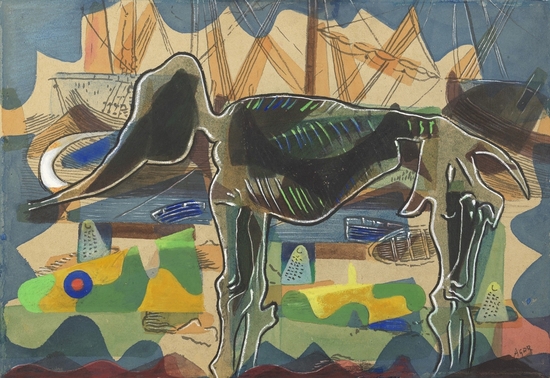
Untitled
Not all of Britain’s leading artists participated in the WAAC scheme. Some had ideological objections, others were uninterested. The WAAC was also selective, establishment and un-interested in Surrealism. This was rooted in the practicalities of propaganda making but also in its concept of the public’s understanding of art.
Eileen Agar trained at the Byam Shaw School and the Slade but switched to Surrealism in 1930. She did not paint much during the war, so this is a rare work. The picture is open to interpretation: the RAF aircraft wings could be a reference to the Battle of Britain while the masts and boats indicate a coastal setting and Britain as an island. The skeleton of a mammoth could be a reference to death and memory.
Explore artists in this Curation
View all 12-
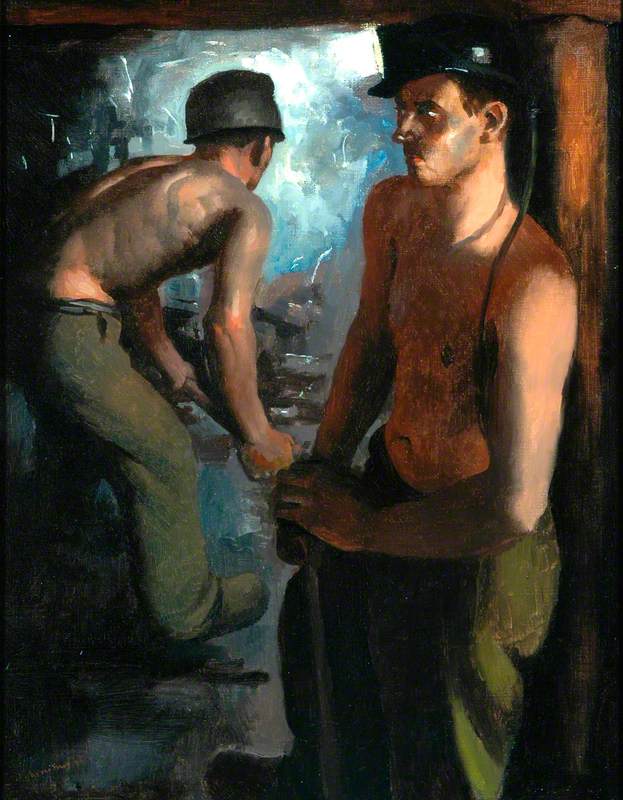 William D. Dring (1904–1990)
William D. Dring (1904–1990) -
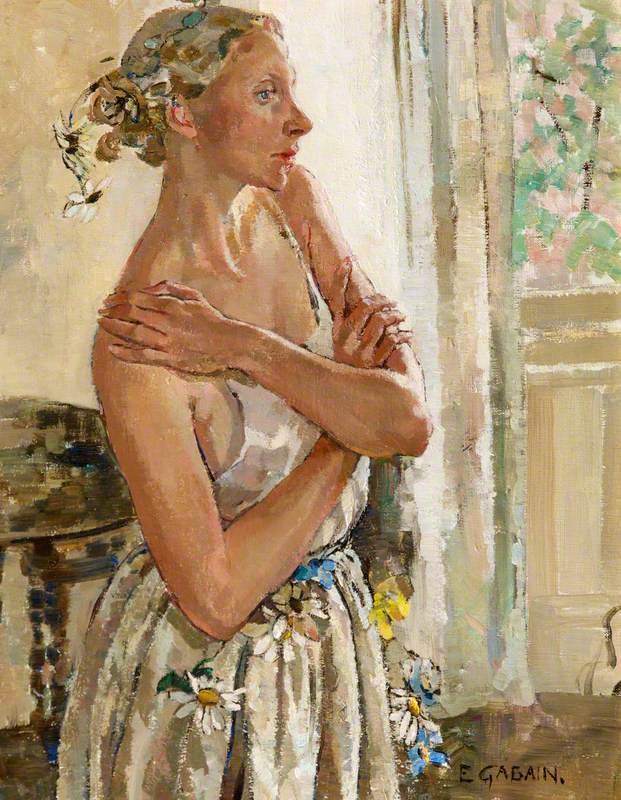 Ethel Léontine Gabain (1883–1950)
Ethel Léontine Gabain (1883–1950) -
 Eric Henri Kennington (1888–1960)
Eric Henri Kennington (1888–1960) -
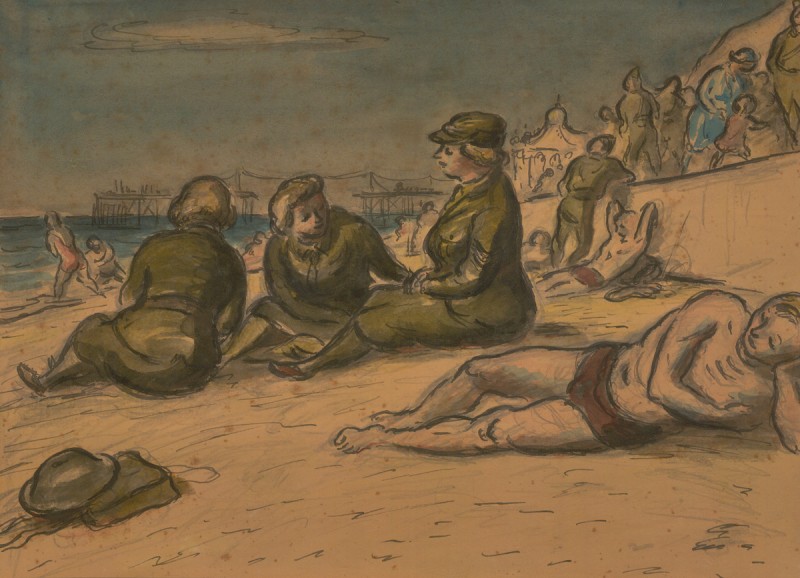 Edward Ardizzone (1900–1979)
Edward Ardizzone (1900–1979) -
 Henry Lamb (1883–1960)
Henry Lamb (1883–1960) -
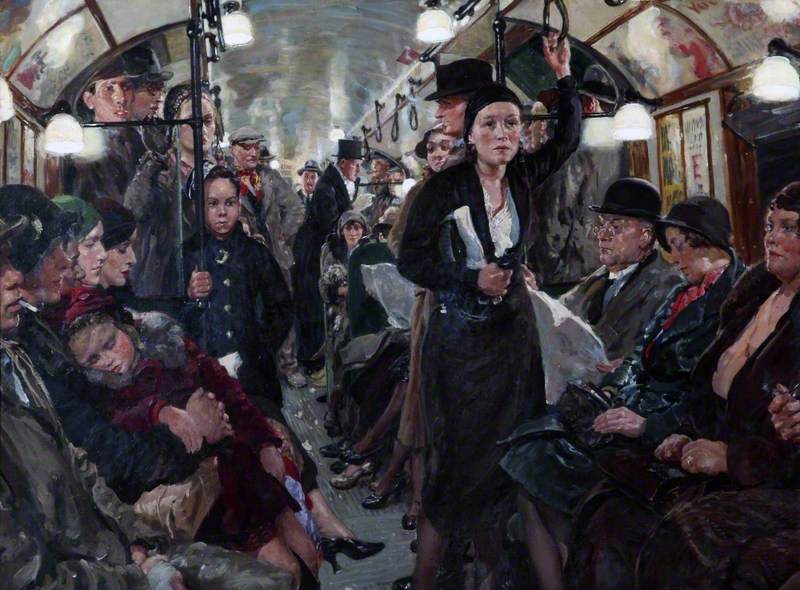 Thomas Cantrell Dugdale (1880–1952)
Thomas Cantrell Dugdale (1880–1952) -
 Alexander Macpherson (1904–1970)
Alexander Macpherson (1904–1970) -
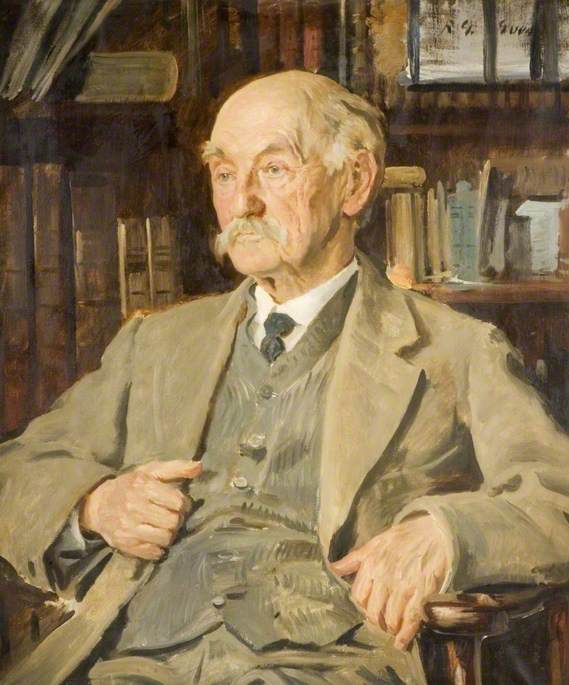 Reginald Grenville Eves (1876–1941)
Reginald Grenville Eves (1876–1941) -
 Evelyn Mary Dunbar (1906–1960)
Evelyn Mary Dunbar (1906–1960) -
 Francis Dodd (1874–1949)
Francis Dodd (1874–1949) - View all 12
